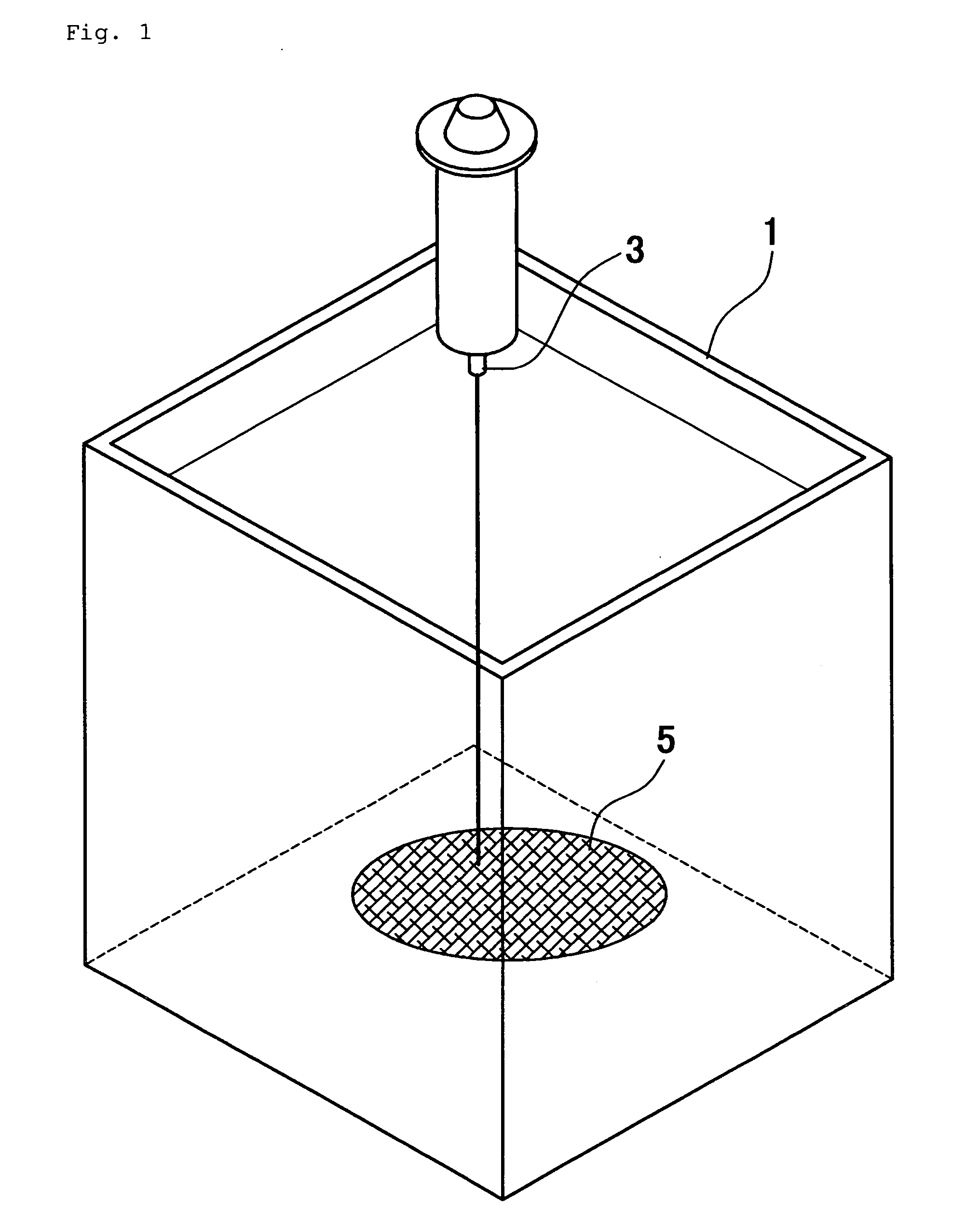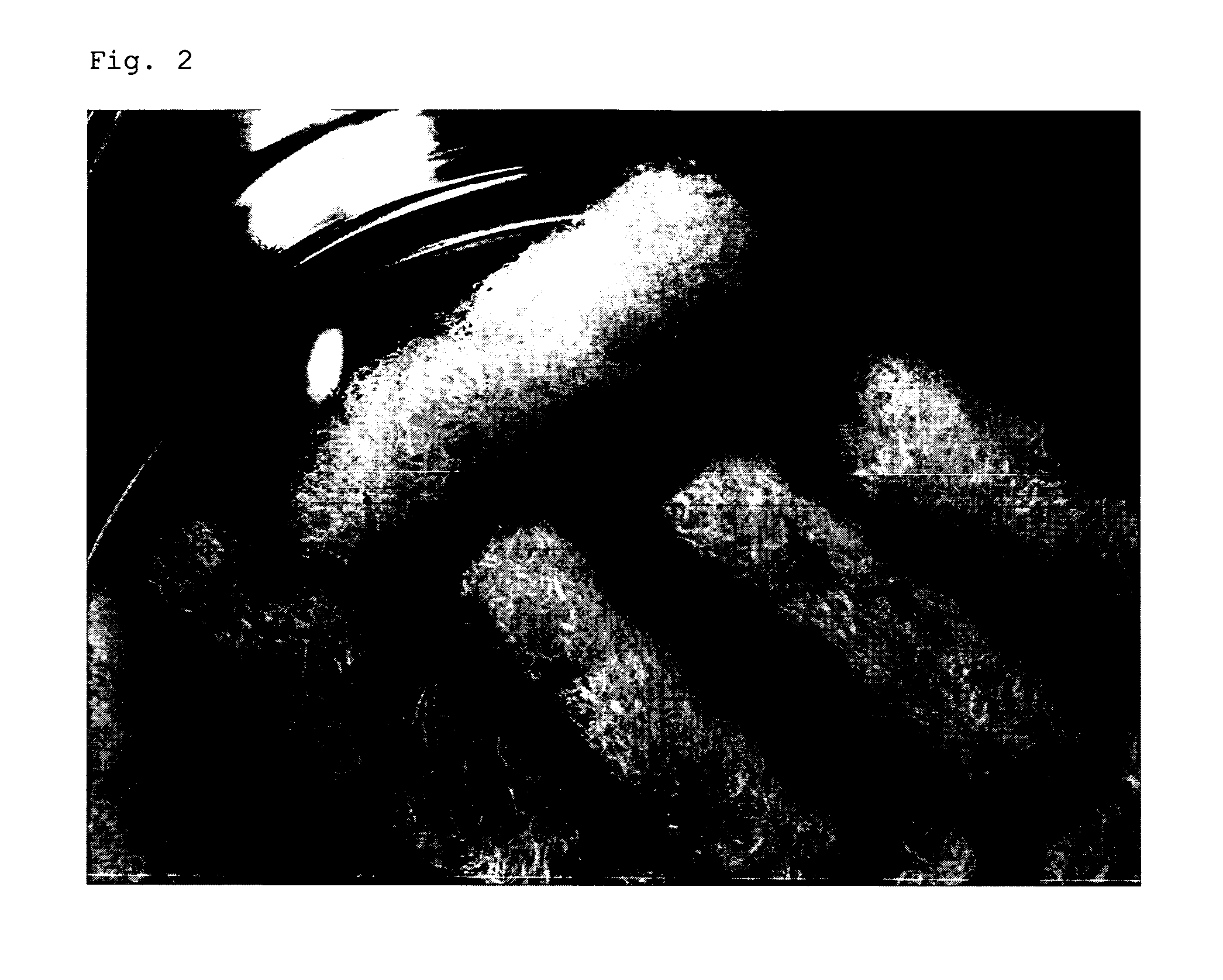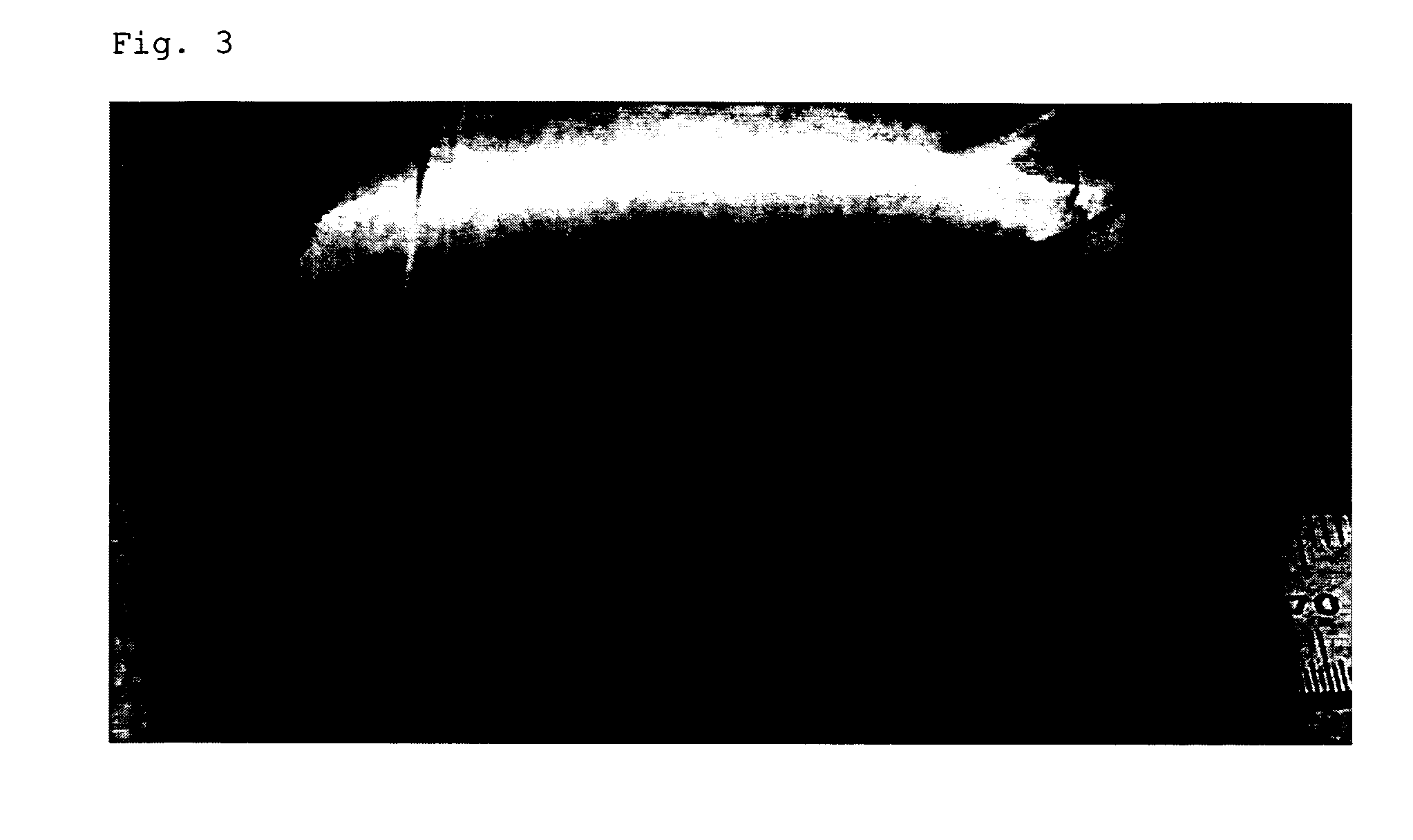Collagen substrate, method of manufacturing the same, and method of using the same
a technology of collagen and substrate, which is applied in the field of collagen substrate, can solve the problems of many steps required to finally yield a nonwoven fabric, sponges, and inability to elastically deform the substrate, etc., and achieve the effects of reducing the total volume of collagen, excellent handling ability, and high hemostasis
- Summary
- Abstract
- Description
- Claims
- Application Information
AI Technical Summary
Benefits of technology
Problems solved by technology
Method used
Image
Examples
example 1
[0078] Collagen type I and type III mixed powders from a pig (manufactured by Nippon Meat Packers, Inc., SOFD type) were dissolved in distilled water for injection, to thereby prepare a 7 w / w % collagen solution. As shown in FIG. 1, 150 ml of the collagen solution was discharged from nozzle 3 into a coagulation bath 1 containing 3 L of 99.5 v / v % ethanol (Wako Pure Chemical Industries, Ltd., reagent chemicals). In this way, a three-dimensional structure was obtained.
[0079] The three-dimensional structure was air-dried in a clean work station, and was subjected to a thermal dehydration crosslinking reaction in a vacuum dry oven (manufactured by EYELA: VOS-300VD type) under high vacuum (1 torr or less) at 120° C. for 24 hours. After crosslinking, the three-dimensional collagen mesh 5 was subjected to neutralizing treatment for 30 minutes in an aqueous solution of 7.5 w / w % sodium hydrogen carbonate (baking soda). After neutralizing, the resultant was washed with pure water, and air-d...
experimental example 1 (
CULTURE EXPERIMENT)
[0080] Three-dimensional culture of human chondrocytes was carried out using the collagen substrate manufactured in Example 1. The collagen substrate was molded into the shape of an ear. First, a cell suspension having a cell concentration of 4.0×105 cells / ml was prepared using a medium obtained by adding 10 ml of Chondrocyne Growth Supplement (product name, manufactured by CELL APPLICATIONS) to 500 ml of Chondryocyne Basal Medium (product name, manufactured by CELL APPLICATIONS). Next, 0.3 ml of the above-mentioned cell suspension was applied onto part of the collagen substrate (about 0.15 g). The collagen substrate was left to stand in a petri dish (manufactured by CORNING, 48 wells) so that a portion where the cell suspension was applied was on the bottom of the dish, and 0.6 ml of the above-motioned medium was gently poured and static culture was carried out for 2 months. Culture was carried out at 37° C. in a 5 v / v % CO2 atmosphere, and the medium was exchang...
example 2
[0082] Collagen type I and type III mixed powders from a pig (manufactured by Nippon Meat Packers, Inc., SOFD type) was dissolved in distilled water for injection, to thereby prepare a 7 w / w % collagen solution. As shown in FIG. 4, 150 ml of the collagen solution was discharged into a coagulation bath 1 containing 3 L of 99.5 v / v % ethanol (Wako Pure Chemical Industries, Ltd., reagent chemicals). The collagen filaments pulled out from the coagulation bath 1 were immersed into a dehydration bath 2 that was provided separately from the coagulation bath 1 and filled with 99.5% ethanol. The collagen filaments 4 pulled out from the dehydration bath 2 were passed through an air dryer 6 for about 3 seconds and were then wound up using, as a core member, a roll-like wind-up tool 8 made of stainless-steel with a diameter of 78 mm and an overall length of 200 mm which was allowed to rotate at about 35 rpm, while a tension was maintained with a tension pulley 7 to prevent the collagen filament...
PUM
| Property | Measurement | Unit |
|---|---|---|
| lengths | aaaaa | aaaaa |
| lengths | aaaaa | aaaaa |
| diameters | aaaaa | aaaaa |
Abstract
Description
Claims
Application Information
 Login to View More
Login to View More - R&D
- Intellectual Property
- Life Sciences
- Materials
- Tech Scout
- Unparalleled Data Quality
- Higher Quality Content
- 60% Fewer Hallucinations
Browse by: Latest US Patents, China's latest patents, Technical Efficacy Thesaurus, Application Domain, Technology Topic, Popular Technical Reports.
© 2025 PatSnap. All rights reserved.Legal|Privacy policy|Modern Slavery Act Transparency Statement|Sitemap|About US| Contact US: help@patsnap.com



